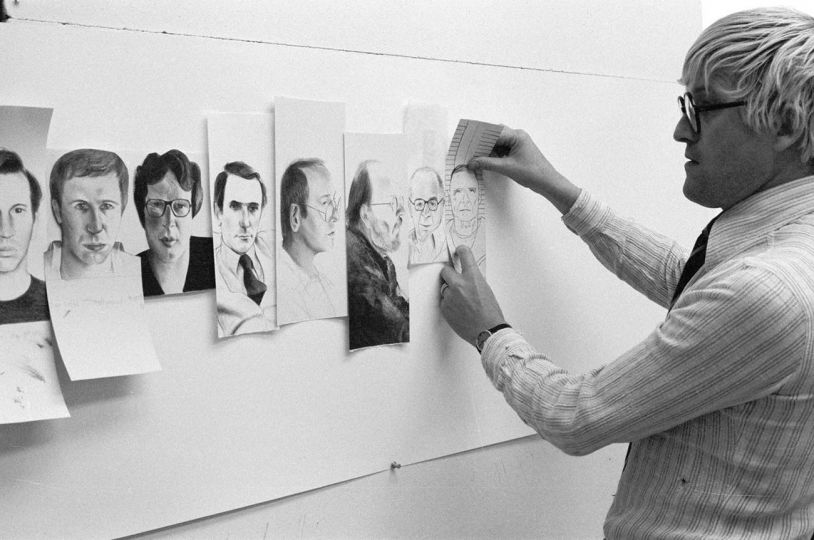A book about about time could seek to illustrate Einstein’s special theory of relativity by picturing clocks and observers travelling at speeds approaching that of light as compared to measurements of time within an Earth-based frame of reference. Gail Rebhan’s interest in time, however, is not related to physicists’ thought experiments but to the temporal passage of humdrum domestic life. In Sequential Still Life (1981) uninteresting moments in daily life are registered in objects as mundane as a kitchen dishrack or a living room table viewed four ways over the course of a day. Time is the plot, repetition the dynamo of existence, though moments in such iterations become less pedestrian when recurrences draw attention to gender roles within family relations. As wife, daughter-in-law, cousin to another woman recently married with a child and then becoming a mother herself in 1984, Rebhan was responsive to what others took for granted. Her husband, Mark, is seen being waited on by his mother while he relaxes watching television, redeeming himself when a baby arrives on the scene and he dutifully helps in feeding – but still with his mother assisting by bringing a cup of coffee to his mouth in what becomes a ludicrous doppleganger scene. Informed by a feminist consciousness, Rebhan photographs children playing on the carpet when their attention is diverted by the television zooming in on the bra of an attractive female figure.
Sally Stein’s extensive text relates Rebhan’s work to other photographic projects and in one instance she discerns a similarity with the visual ethnography of Gregory Bateson in the book he co-authored with Margaret Mead, Balinese Character (1942). While Bateson and Mead were researching and recording social life in what was then the Netherlands East Indies, Rebhan’s fieldwork was conducted within the home and the formation therein of cultural norms. Rebhan’s 280 Days consists of repeated self-portraits using her camera before a mirror, each roll of film printed as enlarged contact sheets. Stein writes how the work challenges a statistical approach to pregnancy – 360 being the average number of days between human conception and birth –by recording lived moments during that period but a series of contact sheets do little to shift the viewer’s interest beyond the calendrical.
Rebhan’s self-concern continues in her book Mother-Son Talk (1996), relating to her two sons beginning to talk and verbally interact with others. Her interest with gender socialization is laudable but the photographs themselves are ordinary and rely on interspersed text, culminating with words of complaint (about some fathers’ st attitudes to parenting) appearing not just alongside an image but directly on top of it. Later family-related projects include her parents’ aging and ill-health and, with Room (2007), a series of horizontal views of her son’s bedroom clutter made on a weekly basis over the period when he returned home from college for the summer. As with Mother-Son Talk, the result is less than interesting although for Rebhan they provided a kind of comic relief after the responsibility of caring for her terminally ill father.
Her most recent work, Living (2022) returns to the aging process though this time the subject is her own body. Her unconventional self-portraits, an inventory of parts of her body, are all the better for minimising the attachment of text to the image. Nonetheless, she cannot resist adding colloquial terms of opprobrium (‘Dowager’, ‘Hag’, ‘Old Bag’, ‘Woman of a Certain Age’). Time, whether measured in a spaceship travelling at light speed or down on earth with a digital clock, remains a plot that will work towards its ineluctable conclusion.
Sean Sheehan
Gail Rebhan, ed. Sally Stein
Mack Books
https://mackbooks.co.uk/products/gail-rebhan-about-time-br-sally-stein-ed
















